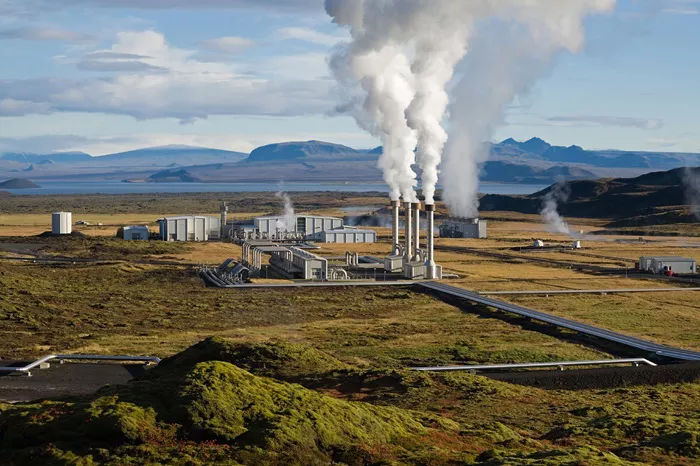Oil and gas production in Europe’s North Sea is experiencing a significant decline, with output falling to its lowest level since the 1970s. Last year, the basin produced just 34 million tonnes of oil, prompting numerous major oil companies to exit the aging region. Despite the UK government’s recent issuance of new licenses following Russia’s invasion of Ukraine, production is expected to continue its downward trajectory.
In response to this decline, researchers at Heriot-Watt University’s Global Research Institute for “net zero and beyond,” known as iNetz+, are investigating the potential to repurpose existing oil and gas infrastructure for geothermal energy production. Experts suggest that utilizing current infrastructure for geothermal applications offers numerous advantages. This approach is cost-effective, reducing both environmental impacts and the significant expenses associated with drilling new geothermal wells. Additionally, existing reservoirs are well-understood, which minimizes the risks associated with new drilling ventures.
While the concept may seem innovative, open-loop geothermal systems, which produce hot formation water for energy generation, have already been successfully implemented in countries like the U.S., China, and Colombia. As oil and gas production enters its later phases, the water content in produced fluids tends to increase, making it feasible to harness the energy within these brines for geothermal power. The researchers advocate for enhanced geothermal systems (EGS) where natural fluid flow is inadequate.
Geothermal Energy’s Role in Addressing the Energy Crisis
The recent COP28 climate summit in Dubai marked a historic moment in international climate agreements, becoming the first UN climate deal to call for a reduction in fossil fuel reliance. Known as the UAE Consensus, this agreement urged all parties of the United Nations Framework Convention on Climate Change (UNFCCC) to triple renewable energy generation capacity and double the rate of energy efficiency improvements by 2030. However, the transition away from fossil fuels is proving challenging amid surging electricity demands worldwide. A report from power sector consulting firm Grid Strategies highlighted a nearly doubled growth projection for U.S. electricity demand over the next decade, driven by factors such as artificial intelligence, clean energy manufacturing, and the cryptocurrency boom.
The current energy crisis has intensified efforts to explore fringe low-carbon power generation sources, with geothermal energy emerging as a viable option. According to the U.S. Department of Energy, the continental U.S. has over 100 GW of geothermal electric capacity—40 times its current installed capacity—indicating geothermal energy could supply approximately 10% of the nation’s power needs. In Europe, however, geothermal energy currently accounts for only 1.5 GW of electricity generation, primarily in Iceland and Italy. Yet, estimates suggest Europe could harness geothermal energy equivalent to 80-100 GW.
Despite its potential, the geothermal sector faces hurdles due to high drilling and production costs compared to other renewable energy sources. The International Renewable Energy Agency (IRENA) reports that the Levelized Cost of Energy (LCOE) for geothermal energy has increased by 31% from 2010 to 2023, reaching $71/MWh. In contrast, costs for solar PV have plummeted by 90% to $44/MWh, while onshore wind has decreased by 70% to $33/MWh.
The Promise of Enhanced Geothermal Systems (EGS)
Enhanced geothermal systems (EGS) present a promising solution to these challenges, not only boosting energy output from wells over smaller areas but also expanding the regions where geothermal energy can be utilized. Traditionally, geothermal energy has been economically viable only in regions like Iceland, where heat and water are readily accessible. However, similar to shale drilling, EGS can create a subsurface fracture system that increases rock permeability and allows for the injection of heat transfer fluids—typically water. This heated fluid can then be used to generate electricity.
In June, the U.S. Department of Energy announced a $165 million investment aimed at advancing geothermal energy research and deployment. The Enhanced Geothermal Initiative seeks to lower EGS project costs to $45 per MWh by 2035, significantly enhancing the competitiveness of geothermal power. Additionally, the 2021 bipartisan infrastructure law allocated $84 million for EGS project research.
In Europe, the EU-funded GEORISK project has focused on identifying and mitigating risks associated with new geothermal projects to attract private investment. This collaboration involves key stakeholders in the geothermal industry across Europe and has resulted in a new tool to assess various risks associated with proposed projects, including those from natural or human-made factors. The project has assisted European nations in developing financial risk mitigation frameworks necessary under the new EU Renewable Energy Directive.
Roland Horne, a professor of earth sciences at Stanford University, noted the potential for geothermal energy to follow a similar trajectory to solar power: “It’s like solar: If you look at solar 20 years ago, nobody was interested in solar because it cost too much. But as solar has grown, the cost has come down as it improved in scale. We’re on the cusp of moving into the cost-effective range [for geothermal], just like we did with solar, over the next 20 years.”
Overall, there is a significant ongoing transfer of skills and personnel from the oil and gas sector to geothermal energy, as many technologies used in both industries overlap. This transition could propel geothermal energy into mainstream usage in the coming decades, providing a sustainable alternative to traditional fossil fuels.
Related topic:
How To Ungel Diesel Fuel Lines?

